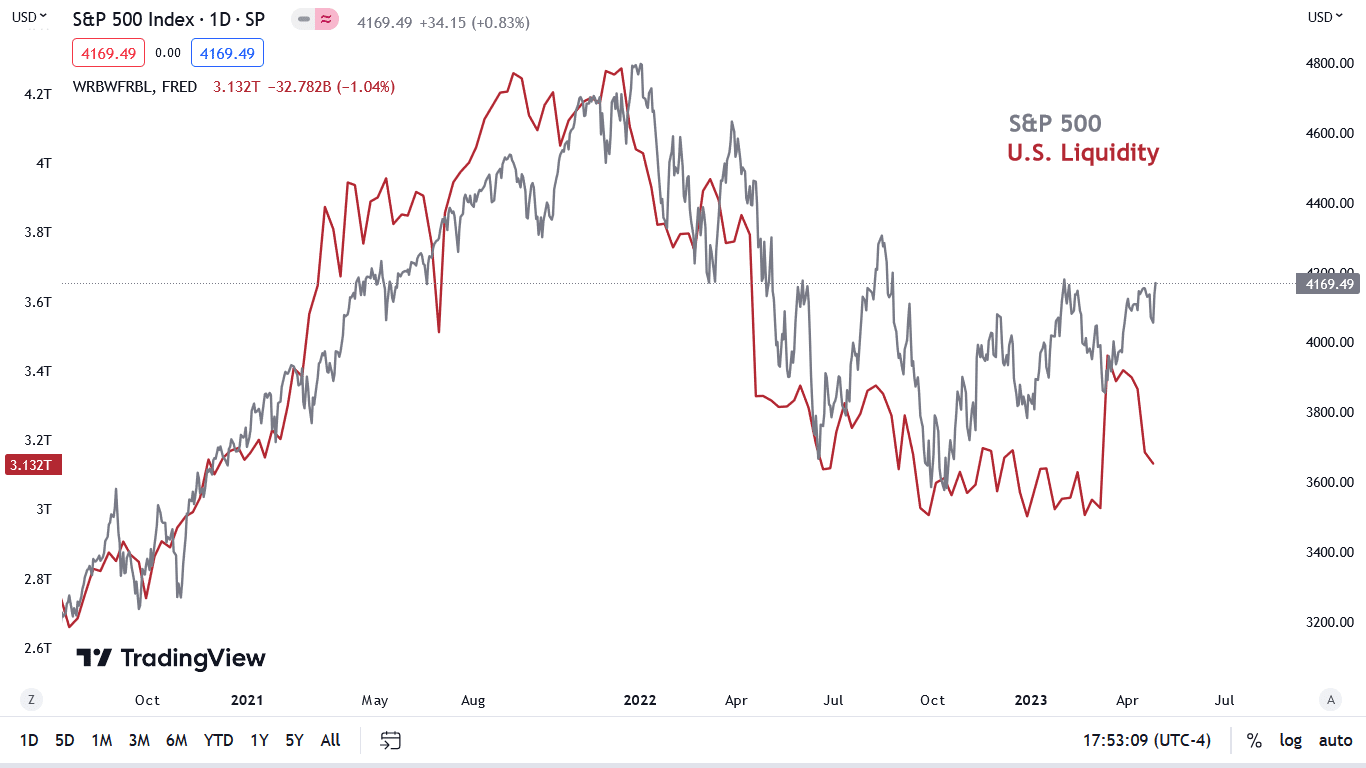Account
New to ADSS? Open an
account now to get started.
Already have an account?
Add funds to your ADSS account
Account
New to ADSS? Open an
account now to get started.
Add funds to your ADSS account
Asset Watch
Tuesday, May 2, 2023

Declining reserves constrain banks’ ability to initiate loans and finance growth. In other words, it can hurt economic activity.
The grey line below tracks the S&P 500, while the red line below tracks reserve balances held at the Fed (U.S. liquidity). As you can see, the S&P 500 has largely followed the metric since the 2020 pandemic, as QE optimism in 2021 turned to QT pessimism in 2022. More importantly, the divergence on the right side of the chart shows how the S&P 500 has rallied recently in the face of contracting liquidity.
Is the decoupling a cause for concern, or is this time different?